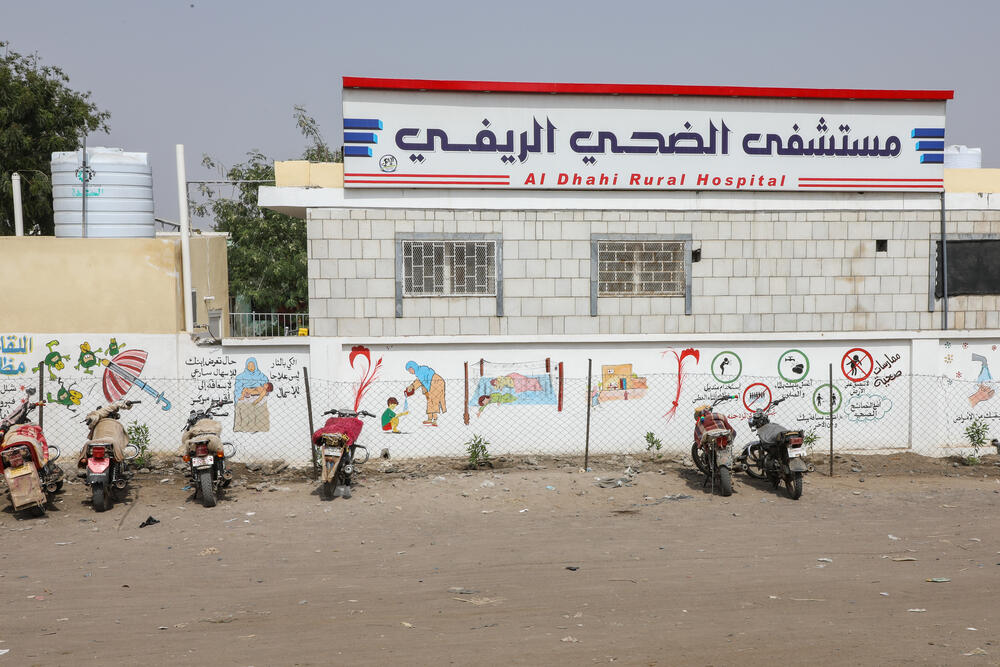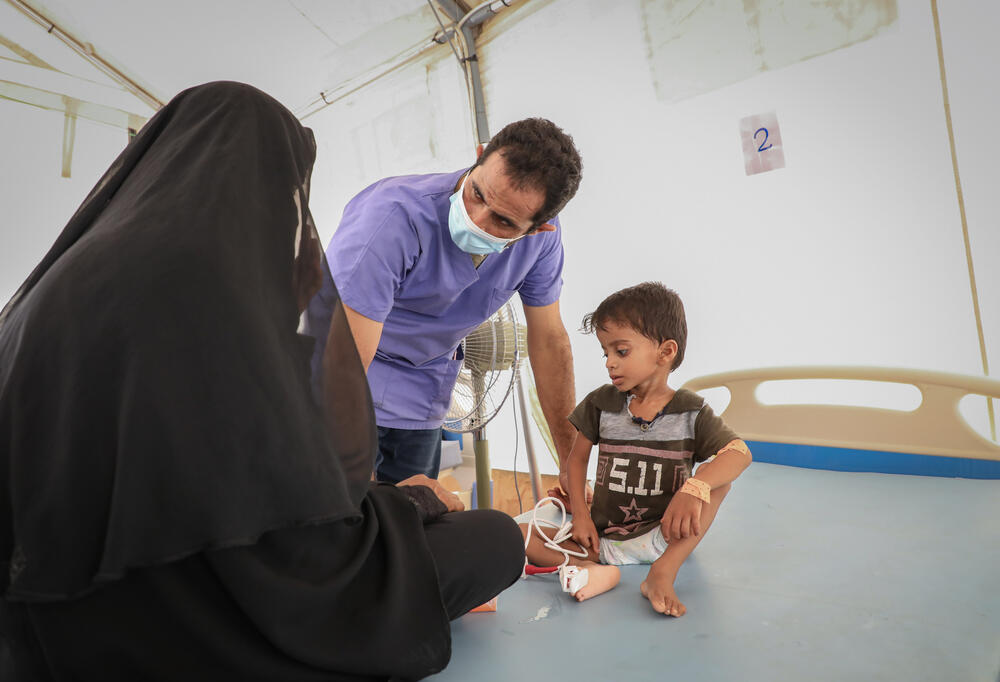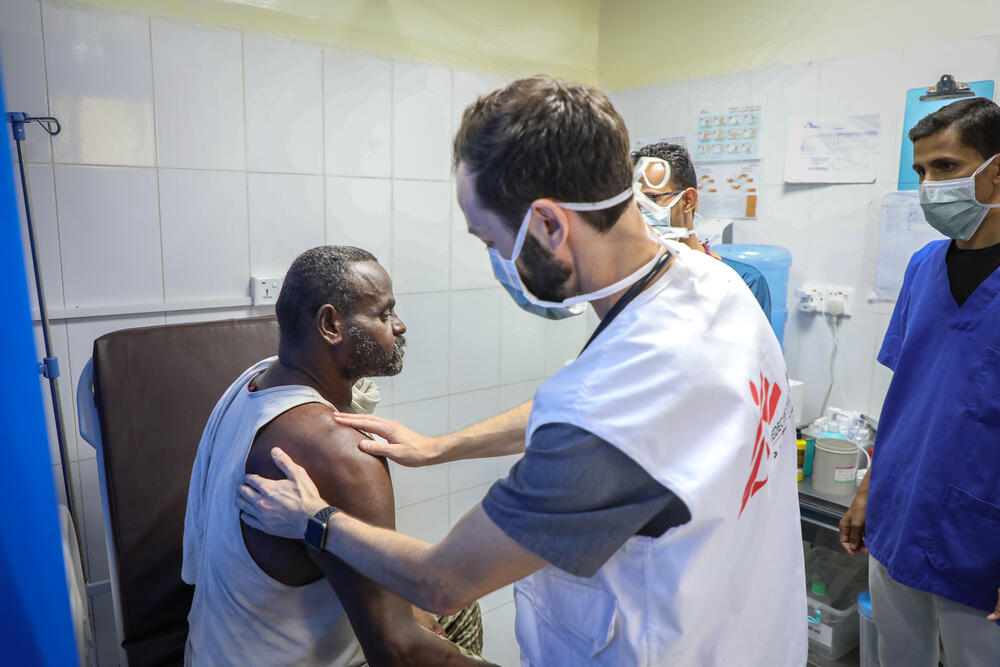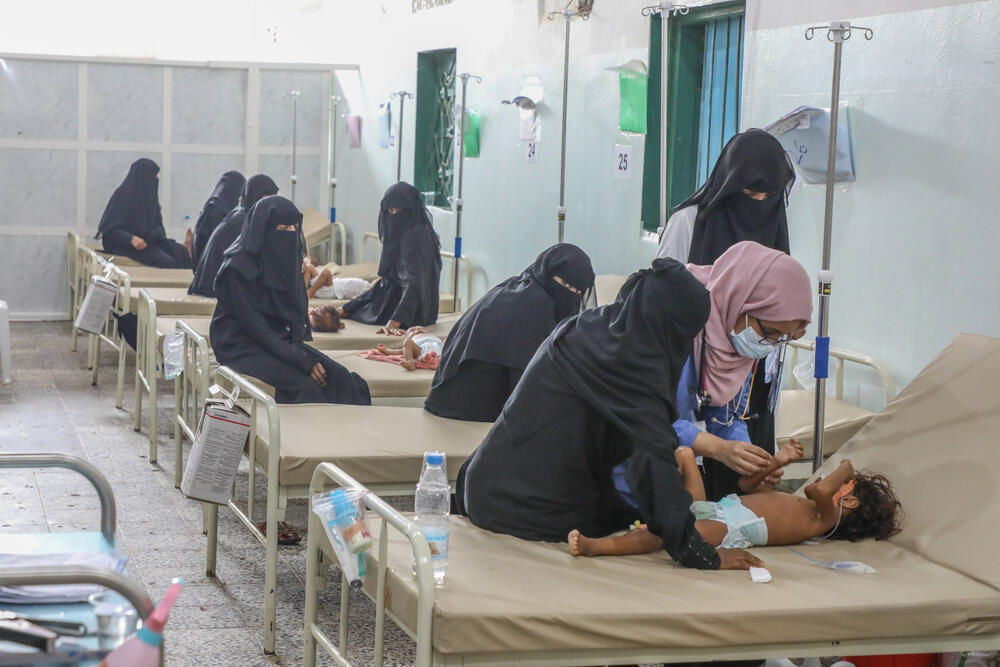Resilience in the face of war: An update from the ER in Ad Dahi, Yemen
15 December 2022
Dr Matt Cloutier
Eight years into the conflict, the war in Yemen is impacting every area of life for people in the district of Ad Dahi. Dr Matt Cloutier is part of the MSF team there and shares this update…
It was my first week working as an ER doctor in a rural hospital in the village of Ad Dahi in northwestern Yemen. Ad Dahi is small, but our hospital it is the only one for miles which provides healthcare free of charge, so we are usually quite busy.It was the end of a long day. In the emergency room we typically see 70-100 patients every 24 hours and our 46 pediatric inpatient / intensive care beds are almost always fully occupied.I was walking home with a nurse who is here to help one issue in particular: malnutrition.
Malnutrition
About 50% of our patients at the hospital are children and they come in with a wide variety of illnesses including bacterial infections (lungs, meningitis, wounds, diarrhea), convulsions, trauma, complications of sickle cell anemia, dengue fever and malaria.
However, one of the most difficult and complicated issues we see here is that of severe acute malnutrition.
The mothers we see in the ER are often gaunt and their babies look emaciated. Mothers often don’t have breastmilk to feed their babies because they themselves are malnourished, so they feed them sugar water or goat milk. These don’t have the right nutrients for infants to grow and can even be a source of illness – for example if the water is contaminated.
Often these babies will be 8-12 months old but look like a premature neonate, weighing less than a few kilograms. Their skin is pulled taught over their tiny faces, and you can see every rib with every breath.
Treatment
That day I’d treated several of these babies in the ER. Their little distended bellies were covered with tiny scabs in patterns, and my Yemeni colleagues explained that when a child has a persistent health problem, traditional healers will make little burns on the skin. Here it is a sign that the problem is chronic – if they have gotten that far it means that they have tried everything else.
The families are always trying everything within their power to help their children, but the sad truth is that if they could consistently afford adequate, nutritious food, it would fix nearly everything.
At the hospital the families are keen to follow our recommendations, but we can only do so much. We admit the babies to the ward, administer fluid, antibiotics and specially formulated therapeutic milks. However, many of these babies are so sick that they need specialist care that our hospital is not equipped to provide and that families cannot afford to access in a private hospital elsewhere.
For those who do survive their complications and start to regain weight from therapeutic foods, the families often need to take them home as soon as possible so they can care for the rest of their children. Once home, many cannot afford transport to the community feeding centres, so their children become progressively malnourished again, and the cycle continues.
The conflict
Since I’ve been here, I’ve learned that almost all of the most common causes of illness and death in children here can be linked to the ongoing conflict.
The economy has been crippled by the conflict, which means not only that food and fuel are unaffordable to many, but also an increase in illnesses caused by poorly maintained infrastructure leading to contaminated water and food.
There are both public and private hospitals with well trained staff here, but they are now overcrowded and largely defunded.
In our ER we see diseases which would normally be prevented through vaccination programs are returning. Women and babies are rushed in with childbirth complications which could have been avoided through prenatal checks or maternity care. Very often patients die of illnesses that they otherwise would have survived had they been in a different context.
Locals tell me that before the conflict, roads were relatively maintained and people followed traffic rules enforced by police. Now the most common problem we see in adults at the ER is trauma by road traffic accident resulting in fractures, dislocations, hemorrhage and brain injuries.
Put to the test
As my colleague and I walked the dirt road, that day in my first week, we were greeted by smiles, waves, and greetings of “salam!”, “hello!” from people of all ages. The people of Yemen I have come across have all been incredibly kind and accepting.
It made me think about the medical team (doctors, nurses, nurse aids): one of the most cohesive groups I have ever worked with, staying positive even under incredibly stressful situations, and always putting the patients first.
As we walk a few donkey carts passed us carrying massive loads of fresh fruit. There were bananas, oranges, papayas, and apples. Many of these only cost about $1-2 USD for a kilogram or more.
With so much food and it being so inexpensive, I asked my nurse colleague why we are seeing so much malnutrition. This is not like other contexts where there is no food at all.
He answered in his usual way, short, quiet, with a shrug – “no money”.
"That's the reality here. The crisis here may not be famine, but it is a humanitarian disaster unfolding in the shadow of war."
Dr Matt Cloutier
The people here are generous, kind and hard-working. It is clear to me that with the constraints of this conflict removed, this place would flourish. The joy and positivity that I see on the street is put to the test by the difficulty we see in the hospital.



